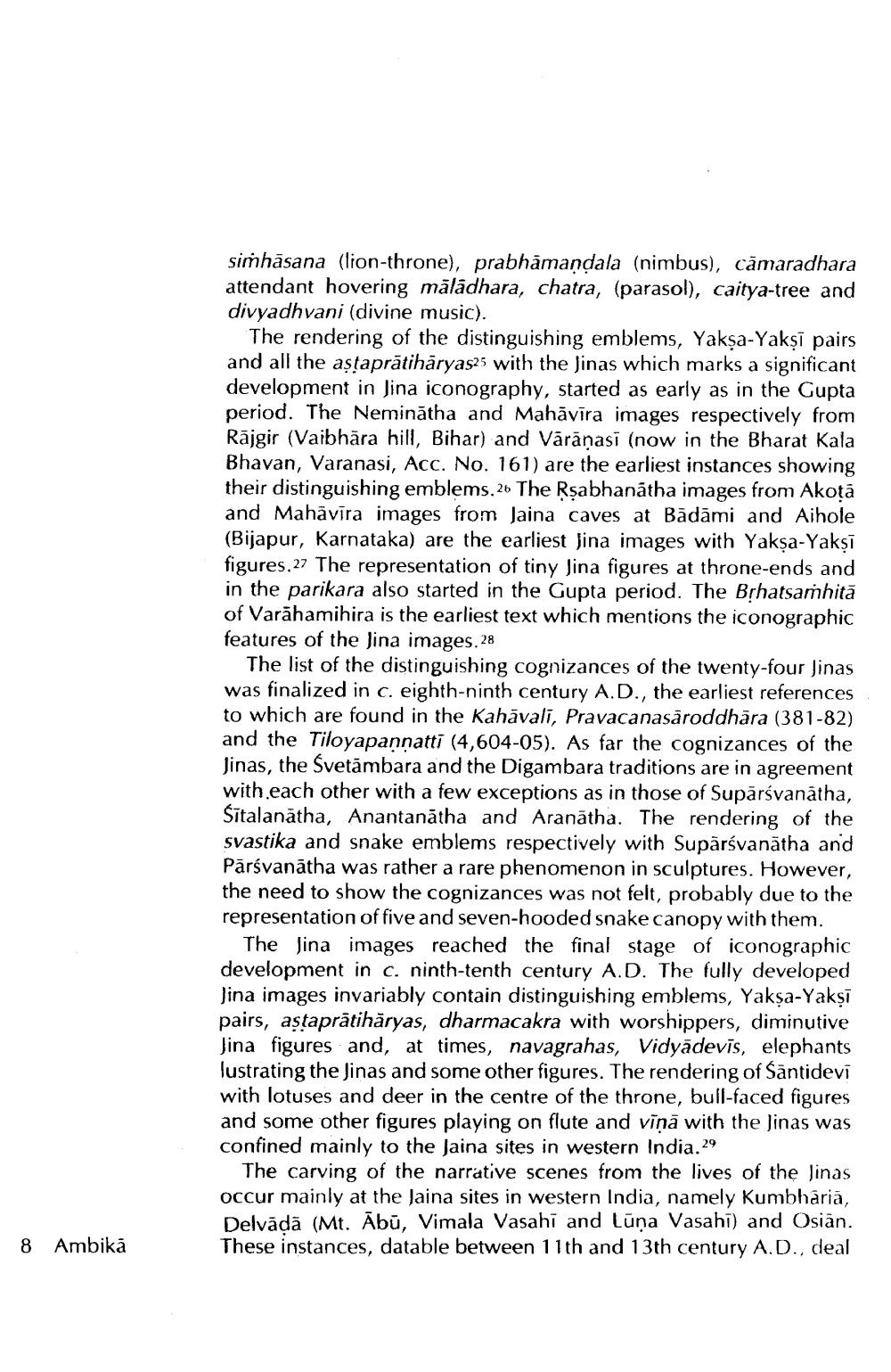________________
simhasana (lion-throne), prabhamandala (nimbus), camaradhara attendant hovering mālādhara, chatra, (parasol), caitya-tree and divyadhvani (divine music).
The rendering of the distinguishing emblems, Yakşa-Yaksi pairs and all the aştaprätihāryas25 with the Jinas which marks a significant development in Jina iconography, started as early as in the Gupta period. The Neminātha and Mahāvīra images respectively from Rajgir (Vaibhāra hill, Bihar) and Vārānasi (now in the Bharat Kala Bhavan, Varanasi, Acc. No. 161) are the earliest instances showing their distinguishing emblems. 20 The Rsabhanátha images from Akotā and Mahāvīra images from Jaina caves at Bādāmi and Aihole (Bijapur, Karnataka) are the earliest Jina images with Yaksa-Yaksi figures.27 The representation of tiny Jina figures at throne-ends and in the parikara also started in the Gupta period. The Brhatsamhita of Varāhamihira is the earliest text which mentions the iconographic features of the Jina images, 28
The list of the distinguishing cognizances of the twenty-four Jinas was finalized in c. eighth-ninth century A.D., the earliest references to which are found in the Kahāvali, Pravacanasāroddhāra (381-82) and the Tiloyapannatti (4,604-05). As far the cognizances of the Jinas, the Svetambara and the Digambara traditions are in agreement with each other with a few exceptions as in those of Supārsvanátha, Sitalanātha, Anantanātha and Aranātha. The rendering of the svastika and snake emblems respectively with Supārsvanātha and Pārsvanātha was rather a rare phenomenon in sculptures. However, the need to show the cognizances was not felt, probably due to the representation of five and seven-hooded snake canopy with them.
The Jina images reached the final stage of iconographic development in c. ninth-tenth century A.D. The fully developed Jina images invariably contain distinguishing emblems, Yakşa-Yaksi pairs, astaprātihāryas, dharmacakra with worshippers, diminutive Jina figures and, at times, navagrahas, Vidyādevis, elephants lustrating the Jinas and some other figures. The rendering of Santidevi with lotuses and deer in the centre of the throne, buil-faced figures and some other figures playing on flute and viņā with the linas was confined mainly to the Jaina sites in western India. 29
The carving of the narrative scenes from the lives of the Jinas occur mainly at the Jaina sites in western India, namely Kumbhāriä, Delvādā (Mt. Ābū, Vimala Vasahi and Lūna Vasahi) and Osian. These instances, datable between 11th and 13th century A.D., deal
8 Ambika




